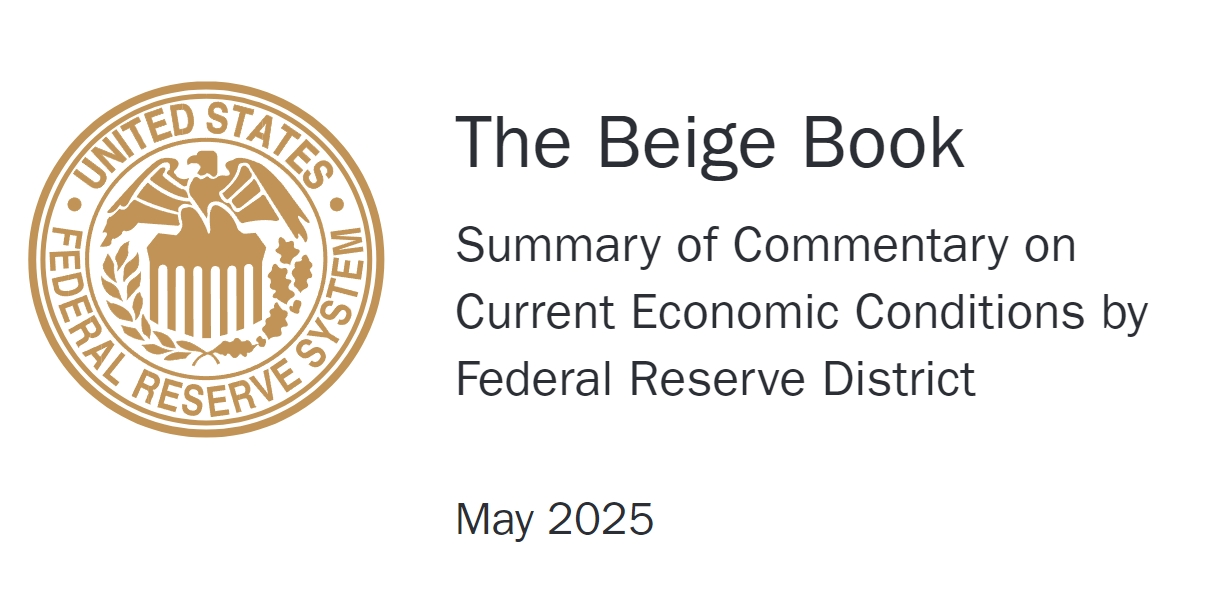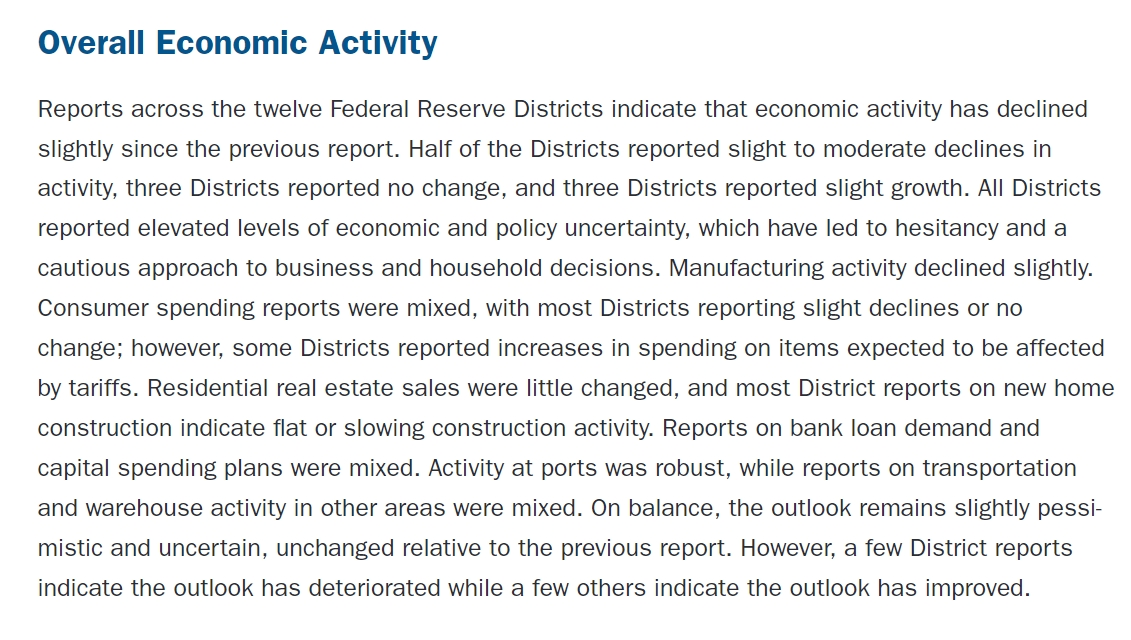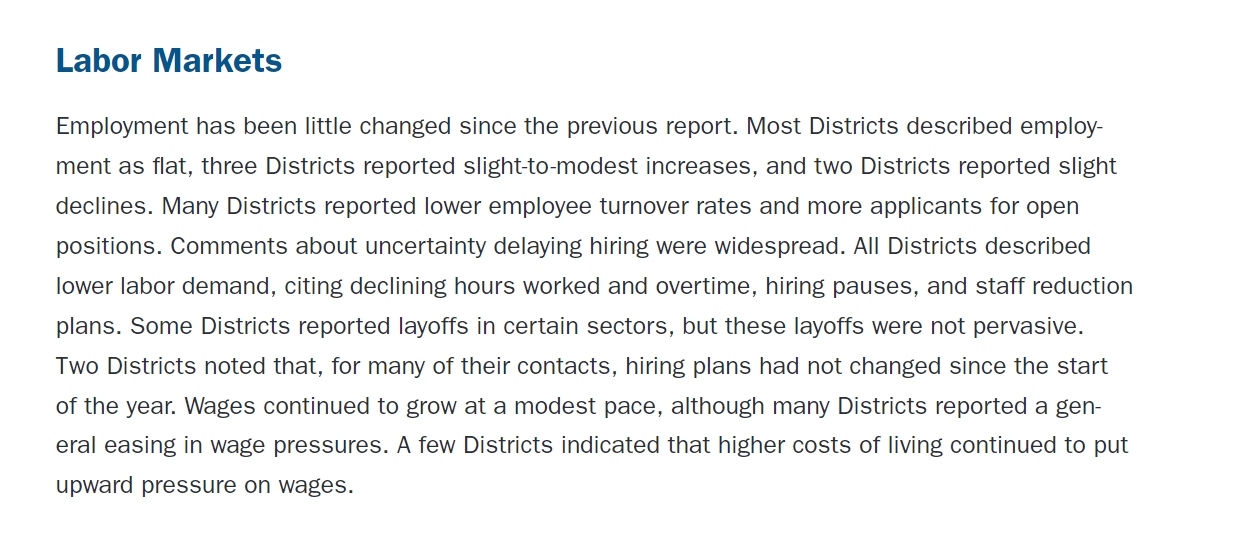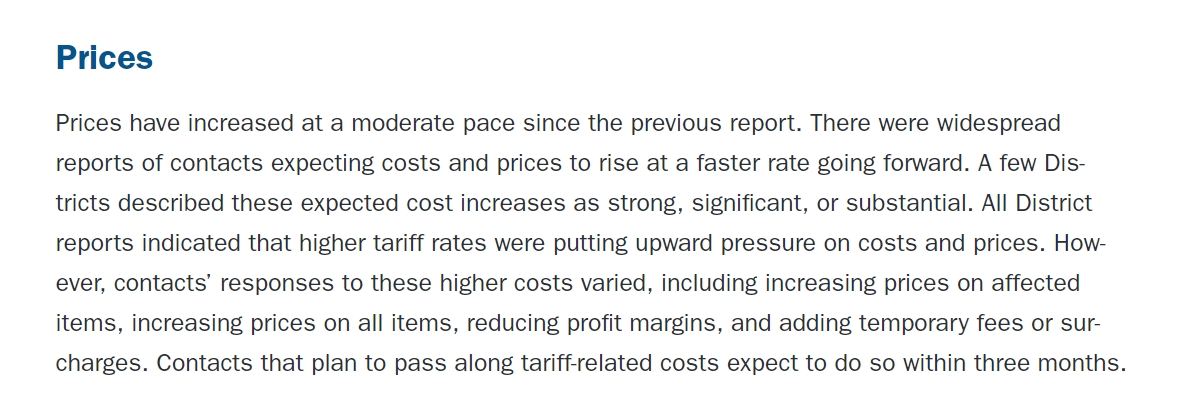The most radical warning came from Commissioner Cook, who even suggested that "all policy options must be open, including interest rate hikes."
On June 4, the Federal Reserve's new Beige Book was announced.

The report shows that since late April, economic activity in the United States has shown a weak downward curve, and all jurisdictions have unanimously reported a resonant increase in economic decision-making hesitation and policy uncertainty.It is worth noting that the word "tariff" flashed 122 times in the report, 15 more times than the previous one, while "uncertainty" and its variants also reached 80 times.
Specifically, of the 12 Federal Reserve jurisdictions, 6 reported a slight economic decline, 3 remained stable, and only 3 achieved weak growth.

In terms of industries, the manufacturing industry bears the brunt of fatigue, while consumer spending is significantly divided among different regions-some companies are hoarding goods in advance due to tariff expectations, forming an irrational purchasing pulse.Although the residential market has barely stabilized, new housing starts and construction activities have generally stalled, as if they were bound by invisible ropes.
What is even more alarming is the simultaneous release of ISM service industry data: the service industry PMI plunged to 49.9 in May, not only falling below the boom-bust line, but also far below the expected 52. Among them, the new orders index plunged 5.9 points to 46.4, while the payment price index bucked the trend to 68.7, the peak since November 2022.This rare combination of shrinking demand and high costs represents market concerns about the risk of stagflation.
The job market is also not optimistic.Most jurisdictions describe employment levels as "flat", but a closer look at micro indicators-shortened working hours, reduced overtime, recruitment freezes and even partial layoffs, traces of ebbing labor demand are clearly visible.

Although a large-scale wave of layoffs has not yet taken shape, stagnant employment in the manufacturing industry and slowing recruitment in the service industry have posed dual pressures.Although wages have maintained moderate growth, they have lost their practical significance under the erosion of the rising cost of living. Workers 'purchasing power is like standing still on a treadmill.The simultaneous decline in employment data in the three major economic cities of Boston, New York and Philadelphia further strengthens the possibility of regional risk transmission.
In terms of inflation, companies generally expect costs to rise "strongly, significantly or significantly" in the next three months. The policy impact of doubling tariffs on steel and aluminum products to 50% will instantly change the cost function in many industries.Metal-packed canned food, auto parts and even construction steel bear the brunt. Multinational food companies have made it clear that they may raise prices and pass on costs.

There are two paths for this pressure transmission: some companies plan to raise prices directly; others try to cushion the impact by compressing profit margins or adding "temporary surcharges".It is worth noting that a dangerous tension is forming between cost-passing expectations and consumers 'affordability. When the payment price index soared to a nearly three-year high and the new order index plummeted, it has become questionable whether the demand side can absorb the price increase.
The policy of doubling tariffs on steel and aluminum, which came into effect on June 4, sharply increased tariffs on imported steel excluding the UK from 25% to 50%, which Trump called an "insurmountable fence."What is even more threatening is the simultaneous "ultimatum" issued by the White House to trading partners: requiring countries to submit the best plan for trade negotiations by Wednesday, setting a countdown to the final implementation of tariffs on July 9.This policy design creates dual oppression-both creating real cost pressures by immediately raising tariffs, and using negotiation uncertainty to curb long-term investment decisions.In this context, the EU has clearly prepared countermeasures.
According to the report, differences within the Fed on policy paths are sharp.
Faced with the judgment of the nature of inflation caused by tariffs, Governor Waller insisted that it was a "one-time shock" and still left open the possibility of interest rates during the year; but Chicago Fed President Goolsbee warned that "temporary nature cannot be lightly said," emphasizing the need to observe the impact in subsequent months.Atlanta Fed President Robert Bostick has insight into a more hidden risk: "When businesses and households expect continued tariff adjustments, there may be a psychological reaction, leading to more lasting inflationary pressures.The most radical warning came from Commissioner Cook, who even suggested that "all policy options must be open, including interest rate hikes."



